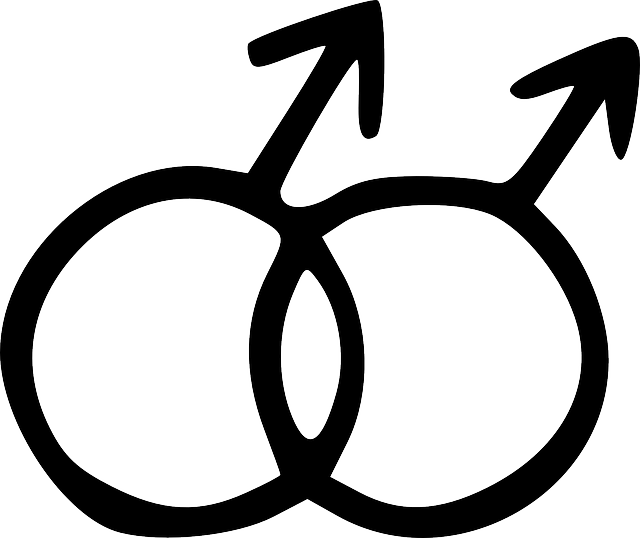This article will explore answers to the question of why we find homosexuality in nature. If you’re not already aware, homosexuality exists in many animal species.
Homosexual behavior, on the surface, doesn’t seem to make any sense when looked at from an evolutionary perspective.

Reproduction is at the heart of evolution. If homosexual couples, by definition, are unable to reproduce, one can’t help but wonder why genes for homosexual behavior are passed on.
In other words, homosexuality in nature shouldn’t exist because it fails to meet the fundamental criterion by which genes (and therefore traits) are passed on- reproduction. Individuals with homosexual tendencies should’ve died off from the population.
Benefits of homosexuality
If homosexuality has persisted in the population, it’s likely there’s some kind of benefit that it confers to individuals that can compensate for its huge cost, i.e. no reproduction.
When we look at the animal kingdom, we find that animals engage in homosexual behavior for a variety of reasons. In most cases, homosexual behavior confers the individual with benefits that outweigh its potential costs (see why we do what we do and not what we don’t do).
Let’s go over the different reasons homosexuality exists in nature:
1) Practice for sex
Since most individuals that show homosexual behavior are bisexuals (holds for animals and humans), it’s been proposed that they engage in homosexual behavior as a practice before they can engage in heterosexual behavior.
The practice could be about any behavior related to reproduction- ranging from courtship to mounting to genital stimulation.
For example, young rams and American bison stick to homosexual sex before they can achieve heterosexual sex. Similarly, same-sex sexual experience in young male fruit flies improves their later heterosexual mating outcomes.
Over 98% of men who show homosexual behaviour have done so by the time they’re 20. Also, women showing homosexual behaviour tend to switch to heterosexual mating after staying in a homosexual relationship for about 1-3 years.1
This exposure to sex and sexual techniques provides these individuals with an advantage over those lacking this exposure. As the old adage goes, practice makes perfect.
2) Social bonding
Members of some species engage in homosexual behaviour to form and maintain alliances and social bonds.
For example, bonobos often have sex (including homosexual sex) to socialize, reduce conflict, and share food. There’s also extreme intrasexual competition among male bonobos for females. Smaller and weaker bonobos often form pairs to defend themselves against stronger and larger male bonobos.
Female bonobos also show increased homosexual behavior during times of high tension and conflict.2 Similar behavior is observed in bottlenose dolphins, acorn woodpeckers, Japanese macaques, and even lions.
Here’s a clip showing homosexual activity among male lions:
3) Biased sex ratio
Homosexuality may also evolve when there’s a significant bias in the male-female sex ratio in a population. If the sex ratio is close to 1, then the individuals of the population are likely to form monogamous pair-bonds where 1 male is bonded to 1 female.
If there are more females than males, evolution may favor female-female homosexual pair-bonding. It’s a better strategy than to be left out by seeking a male who, in all likelihood, might already be bonded to a female.
Researchers studying a socially monogamous colony of albatross in Hawaii observed that 31% of all pairs consisted of pair-bonded females that courted and shared parenting responsibilities.3 The sex ratio in the population was heavily female-biased.
Same-sex pairing, in this case, removes excess females from the population that would, under other circumstances, provide pressure for males in opposite-sex pairs to abandon their partner.
There are more females available that can take part in extra-pair copulations and provide care for the offspring, than there would’ve been had all the pairs comprised opposite sexes, or even if excess females had remained unpaired.
Similar female-female pairings have been found in several other species such as Roseate terns and California gulls.
4) Helpers in the nest
Members of a family who do not benefit the family directly by reproducing can still aid the survival and replication of the family’s shared genes in other ways. They can rear the young, provide resources, and offer other uncle-like services to their families.
For instance, gay men in Samoa are known to spend more time doing uncle-like activities than straight men.4
5) Reduced competition
Studies show that a male with 3 or more older brothers is likely to be gay.5 Having too many sons could lead to greater intrasexual competition and competition for parental resources among them. Hence, having a gay son after you’ve had a bunch of sons and can mitigate this competition.
6) Lack of heterosexual mates
It’s possible that a lack of heterosexual mates could lead individuals (especially males) to resort to homosexual behaviour to release their sexual frustrations.
Male elephant seals that are prevented from mating during the entire mating season sometimes coercively mount younger male pups.
The same dynamic could be at play in prisons where otherwise heterosexual men engage in homosexual activity because of a lack of heterosexual outlets.
This is supported by an important 2013 finding that prisons in the US that allow conjugal visits report a decrease in sexual violence.7
References
- Baker, R. (2006). Sperm wars: Infidelity, sexual conflict, and other bedroom battles. Basic Books.
- Fruth, B., Hohmann, G., Vasey, P., & Sommer, V. (2006). Social grease for females? Same-sex genital contacts in wild bonobos. Homosexual behaviour in animals: An evolutionary perspective, 389.
- Zuk, M., & Bailey, N. W. (2008). Birds gone wild: same-sex parenting in albatross. Trends in ecology & evolution, 23(12), 658-660.
- Vasey, P. L., Pocock, D. S., & VanderLaan, D. P. (2007). Kin selection and male androphilia in Samoan fa’afafine. Evolution and Human Behavior, 28(3), 159-167.
- Blanchard, R., & Bogaert, A. F. (1996). Homosexuality in men and number of older brothers. The American journal of psychiatry, 153(1), 27.
- Hensley, C., & Tewksbury, R. (2002). Inmate-to-inmate prison sexuality: A review of empirical studies. Trauma, Violence, & Abuse, 3(3), 226-243.
- D’Alessio, S. J., Flexon, J., & Stolzenberg, L. (2013). The effect of conjugal visitation on sexual violence in prison. American Journal of Criminal Justice, 38(1), 13-26.
